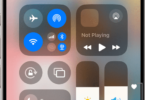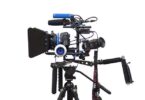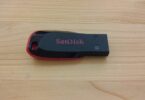At present, Android devices have become a part of our regular routine, for both personal and professional uses. Mainly in a business setting, you can face major challenges while managing several Android devices. In this case, MDMApp is beneficial, which offers a reliable solution allowing you to manage Samsung devices remotely. Let’s dig into the article to learn what is MDMApp; a seamless solution that it offers for remote device management, etc.
What is MDMApp on Android?
MDMApp stands for Mobile Device Management Application. This Samsung app enables you to control the settings and setup of the devices, which run on Android OS.
Android MDM for Device Lifecycle Management:
In this case, you first have to enroll your device into an Android MDM solution. Next, your task is to install and configure apps to provision the devices. Additionally, it is required to apply security policies and push content on your smartphone. After that, these devices are delivered to the real users. As soon as the devices will be in active use, this MDMApp tool will assist in managing and monitoring those devices.
The purpose is to ensure that the devices remain compliant and protected. In order to take remedial actions if the devices are non-compliant, you need to use the Android Device Management solution. As soon as these devices are outdated or reach end-of-life (EOL), they will be retired from this solution.
How Does Mobile Device Management Work?
MDM solution uses software which serves as a component to provision mobile devices. In addition, it helps to protect the data of an organization. Besides, organizations apply software, processes and security policies onto phones and toward their use to practice MDM. MDM solution helps to secure data, apps, and content, along with managing device inventory and provisioning. In this sense, you should know that mobile security & MDM are similar.
Mobile device management indicates a device-centric approach. On the other hand, UEM and phone security are user-centric. As an employee you can get smartphones, laptops or a personal device that are enrolled remotely in an MDM program. Remember that personal devices can get access based on roles to several things like GPS tracking, data and email, a secure VPN, password-protected apps, and MDM software to keep data secure.
After that, MDM software helps to monitor the business data on enrolled devices. AI and ML use more sophisticated MDM solutions to analyze the data. By using these tools, you can ensure that the devices remain safe from malware and other cyber threats. For instance, a firm could assign a smartphone or laptop to a consultant, which is already programmed with a VPN, data profile, and other vital apps. In this case, the MDM app provides the employer with the most control. Enterprises use these tools to monitor and wipe device data when it is lost.
Which Android Devices Can You Manage With an Android MDM Platform?
It is possible to tailor AndroidOS to run on different hardware, which can be both a blessing and a curse. On one hand, the things that are possible to be built with Android will be merely limited to your imagination. On the flip side, these can make managing the devices complex. So, it is important to choose the rights Android MDM. These are the devices that can run on the Android operating system:
- Tablets
- Smartphones
- Kiosks
- Point of sale (POS) devices
- Self-checkout devices
- Interactive signage
- Handheld scanners
- IoT edge devices, etc.
Generally, using smartphones and tablets is easy, However, it depends on how you use them. The requirements of BYOD companies can vary from those which can use these kinds of devices for business-critical activities. In this case, dedicated device management will come into play.
How Much Does Android MDM Typically Cost?
As per research from Oxford Economics and Samsung, these solutions cost from $3.25 to $9 each month for every device. It indicates that you will need between $3900 and $10800 every year to manage a hundreds of devices.
How Does MDMApp Make Remote Management Easier On Android?
Let’s see how this tool makes remote management easier on Android:
-
Remote Device Tracking:
IT administrators use the app to monitor the whereabouts of Samsung devices in real time using the GPS technology that offers continuous updates. Remote device tracking is an extremely valuable feature for logistics businesses, where it is essential to keep a tab on devices and assets. The real-time tracking feature informs you of the actual location of your vehicle. Thus, you can ensure that all deliveries are on time and operations are done efficiently.
If any vehicle is lost or stolen, you are able to determine the location. Then, you can take important steps to recover them. It helps to reduce the risk of potential financial losses.
-
Security Enforcement:
The app lets you set up powerful security measures on Android devices, such as reliable permissions, advanced encryption, vigilant monitoring, and transferring files securely. One thing that you must do is to keep an eye on user activities to check if there are any signs of suspicious attack. You should stop installing apps which are potentially unsafe. These steps will help to secure the sensitive corporate data even when you use devices outside the office.
-
Application Management:
With the help of MDMApp, you are able to manage the applications from a centralized platform on all Samsung devices. This feature allows you to add apps remotely. In addition, you can update and remove the apps on different devices —— it does not matter where they are or what the time is. In this way, it is possible to ensure that all employees will be able to access important tools at a time.
What makes this app exceptional is its capability to restrict access to specific apps. It ensures that employees will be able to use approved apps. Thus, it helps to reduce the chance of installing any harmful software.
-
Settings Configuration:
People now no longer want to configure every device manually. With the help of the app, IT administrators are capable of configuring device settings remotely. For instance, they can configure device policies, network access, device monitoring, file sharing and transfer, language, app restrictions and installation, etc.
You should know that such configurations are aligned with organizational needs and policies — MDMApp helps to make all these possible. While it reduces the risk of errors, it can save precious time and effort in business.
-
Remote Lock And Unlock:
This feature allows you to safeguard devices that are stolen and lost. This app is able to prevent unauthorized access to the data, when the device remains unattended. Besides, in case of a security breach, administrators are able to lock devices to prevent any type of potential harm. Once you fix the security problems or resolve the device, you need to unlock it remotely. Then, you have to reset the password.
What Are The Features Of Android MDM?
The features of Android MDM are:
-
Device Enrollment:
You are able to use QR code scanning to enroll devices within seconds. Thus, you can perform bulk enrollment.
-
Device Lockdown:
The app enables you to use SureLock to access only approved apps. In this case, you need to put your device in Kiosk Mode.
-
Location Tracking:
You can monitor devices in real-time on a map. It helps to save historical data. Also, you can use geo-fencing and geo-tagging.
-
Remote Control:
The app enables you to see the device screen remotely. In addition, you are able to transfer files and share clipboard data.
-
Messaging:
It enables you to send messages from the central console to devices.
-
Asset Tracking:
The app lets you monitor company assets like tablets, smartphones, etc.
-
Device Maintenance Window:
In order to reduce device downtime, you are able to schedule device maintenance during off-peak hours. Thus, you can prevent end-user distractions.
Capabilities Of Android Mobile Device Management Software:
A solution that can support MDM needs to come with these capabilities:
-
Easily Manage Your Devices:
The app helps you to manage employees as well as their devices remotely. It lets you update vital security patches for apps, firmware, etc. Or you can update device security configuration across several devices very quickly. Also, you are able to improve phone security significantly.
-
Android Device Enrollment:
You can follow different ways to enroll Android devices in MDM platforms like Zero-touch enrollment, Android Enterprise, and Samsung KME.
-
Installing Android Apps And Content:
You can install the Android app from the Android Device Management directly. Besides, it is possible to install apps that are managed and approved from the Managed Google Play Store or from the Enterprise App Store. You are able to install apps silently to avoid the need for user intervention on the device. With the help of the app, you can transfer files and content in bulk. The app uses its relay-based file transfer feature to push content from a local server on the customer network.
-
Secure Android Kiosk Mode:
The tool configures kiosk mode to transform consumer tablets or smartphones into devices, which are used for dedicated purposes. This mode makes sure that users can access only approved apps. It will not be possible to access unapproved apps. Also, the app does not allow users to change Android system settings.
-
Profiles and Policies for Company-Owned and Employee-Owned Devices:
Android Enterprise from Google offers extra features for mobile device management solutions. It is compatible with BYOD or Work Profile for employee-owned devices. Work profiles make sure that organizations can see the business data and apps. These also ensure that the IT team of the organization can control business apps and data. However, the organization can’t see employees’ personal data. This tool empowers the IT team so that they can apply security policies. For instance, they can clear company data and apps if necessary, and use strict corporate passwords.
-
GPS Location Tracking:
This tool permits real-time GPS tracking on Android devices on the map. Moreover, monitoring historical locations of the users and their devices is possible. This tool implements advanced features, such as geo-fencing using GPS location tracking.
-
Troubleshooting Android Device Issues with Remote Control:
You can use the tool to control the device completely and to resolve device software & configuration problems. IT technicians are capable of seeing device screens through their browsers. Additionally, they use keyboard and mouse in order to interact with the device. Several admins use the multi-admin remote control feature to remotely connect the end-user devices and fix them at a time.
-
Asset Tracking and Reporting:
The tool can provide updated details like battery status reports, number of devices you have, which apps are installed on the devices, etc.
Android MDM Limitations And Drawbacks:
The MDM solutions were mainly designed for BYOD use cases. However, these are limited in multiple key respects. It can be said that MDM solutions are not good at deploying new devices and updating apps or content on those devices.
Do you have to update specific devices with particular software builds inside a particular timeframe or for specifically tagged hardware targets? Then, you can see the MDM solutions leaving you wanting. If you are looking for precision or a level of reliability while deploying software updates to devices, then Google Play Store (for GMS devices) might not be the suitable one.
Besides, if software, content or app updates on your phone are important to you, then you need to find an MDM solution providing granular control of software and content. If you are willing to update the software on your Android smartphone reliably and repeatedly, a distribution platform and infrastructure are essential to manage it.
Why Is MDMApp Essential for Managing Android Devices?
You have already come to know how the features of this tool help to enhance remote management on Android. Now, let’s learn why this app is important for any organization that uses Samsung devices.
-
Comprehensive Security:
This app can offer a powerful mobile security solution with the help of which you can protect your Android device from breaches and threats. It comes with features like strict security policies, real-time device tracking, etc to produce a robust defense system around your Android device. In this way, it can keep your sensitive data protected by offering the utmost security level.
-
Centralized Control:
The app enables IT administrators to control settings updates, app deployment, monitor device usage, and helps to strengthen device security.
-
Enhanced Productivity:
In order to increase productivity, the app can secure seamless operations. Moreover, using this tool, IT administrators are capable of resolving device problems remotely, resulting in less disruptions to workflow.
-
Compliance And Data Protection:
Security features of the app keep the sensitive data of the organizations protected. Also, it ensures that every user is remaining in compliance with vital data protection regulations including the EU’s General Data Protection Regulation (GDPR) and the US’s Health Insurance Portability and Accountability Act (HIPAA).
It is possible to count on this tool in order to equip the medical professionals with Android devices fortified with the essential security measures for securing patients data. In order to fulfill HIPAA needs, the app enforces encryption. Additionally, it keeps the access controls secure. Moreover, it enables you to monitor device usage.
Understanding MDMApp Permissions On Samsung:
This app requires particular permissions for managing and securing Android devices. The permissions are as follows:
-
Camera And Microphone:
The app sends requests to the camera and microphone to give access so that it can remotely resolve the technical problems. They will be capable of viewing and hearing what the user is experiencing. Thus, the problem solution becomes more effective.
-
Location Data:
If you grant the app access to your device’s location, you will be able to use several features. For instance, you can set geographical boundaries and apply location-based device restrictions. In addition, you can track real-time location. With the help of the location services, you are able to find the lost devices and keep an eye on employees, and offer emergency assistance quickly.
-
Device Information Retrieval:
This permission lets the app gather information about the OS, model, network status, battery level, etc. Thus, you can understand the conditions and capabilities of every device, resulting in troubleshooting the problems easily.
-
Storage:
This app needs entry to the storage of your device in order to save files, log activities, perform remote file management activities, such as wiping data, deleting files, synchronizing files etc. When you enforce any security policies or try to manage shared files, you will get benefits from this functionality.
-
Mobile Number:
For each device, mobile number, mainly the IMEI and MEID are considered as unique identifiers. With the help of these identifiers, it is possible to track as well as monitor the devices. These identifiers ensure uninterrupted connectivity even when the user travels across nations or switches SIM cards.
Components Of Mobile Device Management Tools:
Let’s see the components of MDM tools.
-
Mobile Management:
From procuring, and deploying to managing mobile devices, IT departments perform different tasks for their workforce. Moreover, they troubleshoot device functionality. These departments confirm that every device includes the required OS and apps for different purposes like data protection, security, backup and restoration.
-
Application Security:
Application security can involve app wrapping, where an IT administrator needs to apply security features to an app. After that, the app is expected to be redeployed as a containerized program. Such features help to determine if user authentication is necessary to open an application.
-
Identity And Access Management (IAM):
Strong IAM is necessary for secure mobile management. It enables enterprises to manage user identities associated with a device. It is possible to regulate access of every user within an organization with the help of single sign-on (SSO), multifactor authentication and role-based access features.
-
Endpoint Security:
Endpoint Security is capable of encompassing all devices that have the ability to access a corporate network. These include
- IoT or Internet of Things,
- wearables,
- sensors and
- non-traditional mobile devices.
Additionally, endpoint security comes with standard network security tools. These are:
- URL filtering and cloud security
- antivirus software, network access control, and incident response.
MDM Use Cases:
Nowadays, apart from the office environment, mobile devices are used as info screens, and point-of-sale (POS) terminals. These are essential in logistics, telemedicine, and education. Let’s learn how MDM is beneficial in different industries.
-
Healthcare And Telemedicine:
You should know that mobiles are often used in order to store highly sensitive patient data. MDMApp becomes beneficial in healthcare organizations, as it ensures that the organization’s devices and data remain secure and comply with industry regulations.
-
Transportation And Logistics:
Smartphones and tablets are used in different tasks throughout the whole supply chain. For instance, these let you scan barcodes, access custom apps, locate deliveries, etc. Transportation and logistics companies use MDM to quickly enroll devices and ensure that they are always functioning properly. You can turn your device into Single App Kiosk mode when you want to restrict device functionalities. Mobile device management supports regulations like the U.S. congressionally mandated ELD or electronic logging device rule.
-
Education:
With the aim of increasing teaching facilities, schools are adopting tablet-based teaching methods. Tablets as well as laptops should be configured properly and come with all the required apps installed before getting used in teaching. IT can use MDM to block access to specific websites, blacklist harmful apps, set restrictions for device usages, and configure the entire device fleet remotely. A few MDM vendors provide flexible licensing in order to make MDM solutions suitable for every budget.
-
Retail And Service Industry:
In the retail and service industry, mobiles are used widely. These are used as info screens, self-service checkouts, point-of-sale (POS) terminals, etc. In addition, you can see that tablets are used in restaurants to order food or view seating charts. If many users are using devices, these turn into Single-App Kiosk mode to ensure secure use. It also helps to set other device restrictions.
-
Government:
Governments comply with security standards that are even stricter than those of big corporations. In this case, it is essential to secure sensitive data and devices. Mobile device management helps public-sector organizations to comply with regulations.
-
MDM For Small Business:
Cloud-based MDM tools are great for businesses which are small and medium sized. These tools are advantageous in monitoring their device fleet and the extra benefit is that businesses do not need to hire an in-house IT specialist.
-
Managed Service Providers:
MDM helps MSPs or Managed Service Providers to set up secure processes, automated, legislation-compliant processes, which aids in seamless IT service. IT service providers are able to see the devices of all customers in a centralized MDM portal and manage them proactively.
Mobile Device Management Best Practices:
No matter whether it is cloud-based or on-premises — an MDM solution needs to allow an organization to view users, endpoints, and everything in between. Remember that if you have chosen a good mobile device management software solution, it will help you to:
- Save time
- Increase security
- Improve efficiency
- Increase production
- Ease of overall mobile management system
Let’s see three practices you need to consider while choosing an MDM solution:
-
Automated Reports:
Ensure that you can make all enrolled devices and related information simple-to-follow using the reporting and inventory tool. It is required to create regular updates automatically without manual input.
-
Automatic Updates:
Cloud MDM should be capable of providing immediate accessibility. It should not have any associated fees. Also, you should not need to purchase and install hardware. Ensure that the platform gets automatically updated with the new features at the disposal of a company.
-
Easy Search:
A cloud-based solution has the capability of searching for anything and everything. An organization should be able to access its reports, apps and secure documents easily using the tool.
BYOD And Mobile Device Management:
-
Bring Your Own Device:
BYOD means that employees can use their personal phones for work rather than using the devices issued by the company. It is easy to hand over company-issued devices to the employees. But, it can be challenging to apply enterprise security to a personal smartphone. However, BYOD is popular among younger workers. In order to make employees more comfortable, organizations make such compromises. As there is no need to buy additional hardware, BYOD can make the mobile workforce more budget-friendly.
-
Enterprise Mobility Management:
EMM is a wider form of MDM, and can encompass app and endpoint management and BYOD. Besides, its solutions are highly scalable and use modern AI-powered security features to deliver notifications and real-time insights about different activities that come from several sources at a time.
-
Unified Endpoint Management:
This one represents both evolution and integration of EMM and MDM. UEM helps to troubleshoot more issues related to IoT, desktop or others. Enterprises use these solutions to control the whole IT environment and its endpoints like tablets, laptops, smartphones, and desktops.
These solutions ensure that the personal and enterprise data of every user remains protected. Also it secures user’s content, and data. Enterprises use an agile UEM system to choose scalable solutions depending on the requirements, whether the enterprises are covering a single OS or different devices across several platforms. AI and ML power the mature UEM solutions. The IT department of an enterprise uses this to make quick decisions depending on analytics and real-time data.
How To Disable MDMApp On Android:
If you are willing to disable the MDMApp on your Android device, you have to follow these steps:
Force Stop The App:
- Your first task is to navigate to Settings.
- Then, you need to click on Applications.
- Now, your job is to tap on the MDMApp.
- Finally, you need to force stop the MDMApp.
Clean Data And Cache:
- You first have to tap on the MDMApp.
- Now, your job is to enter Storage.
- After that, your task is to tap on Clear Data and Clear Cache.
- Now, you have to go to App permissions. Then, you need to disable permissions such as phone, camera, microphone, etc.
Performing A Factory Reset:
Suppose you are willing to wipe your device completely. In that case, you have to perform a factory reset. Remember that the action will erase all apps that are installed and other data stored on your device.
If you are willing to perform this process, you need to follow these steps:
- You first need to navigate to Settings.
- Then, your job is to move to General management.
- Now, you need to go to Reset.
- At last, your task is to choose the “Factory data reset” option.
You must remember that the procedure will remove the mobile device management from the Android device. So, we recommend you to contact the customer service of your device for guidance before you start the process.
Can You Uninstall the MDM App?
The steps that you need to follow to uninstall the app are:
- Your first job is to navigate to Settings.
- Then, you have to go to apps.
- Now, your job is to move to all apps.
- After that, you have to search for the MDM app. Once you find this, you need to tap on it.
- An option saying uninstall will appear now.
- You have to select uninstall.
- Then, you have to hit ok.
How To Choose The Right MDM App:
If you are planning to choose the best MDM app, you should keep in mind the necessary aspects:
-
Security:
Every MDM tool comes with a few security features. Therefore, there is nothing unique about this case. The main thing businesses should look for is how much sensitive data is stored on the devices of their employees. If any business has a lot of sensitive data, you have to consider the security level the MDM tools provide.
-
Integrations:
A few MDM tools are standalone software. Whereas some tools can integrate with other security software. Does your business have any security tools already? If so, you need to look into those ones which are capable of integrating into your existing infrastructure.
-
Security Updates OTA:
In order to receive security updates over the air, the tool should be able to develop a secure configuration standard for the corporate devices. This device standard needs to include strong passwords, encrypted storage for keeping data secure as well as automated devices locking.
-
Feature Requirements:
Companies who are going to use the MDM software for the first time, should go with a simple device inventory, allowing them to monitor devices. Besides, several configuration capabilities are necessary, including email account and Wi-Fi/VPN settings, as well as passcode and drive encryption enforcement. As the numbers of manageable devices are increasing, you will need device enrollment automation and remote software updates. In order to find the best one, you have to compare the features which are supported by every operating system.
-
On-premise Or Cloud:
Most MDM solutions you can find are cloud-based. However, you can use this without the need to invest in extra hardware. Cloud-based solutions offer scalability. This indicates that enrolling more devices is possible when the business will grow. According to this, you are able to upgrade your plan to use extra features. However, if your company wants to run mobile device management systems in your data center, then on-premise and hybrid solutions can be chosen.
Cloud-based MDM is mostly the preferred choice for most users. The reason is that a dedicated person is necessary for on-premise solutions to implement, maintain, monitor, and update this.
-
Usability:
Are you a beginner in this field? Then, you should choose a solution that comes with a user-friendly UI. Suppose, the tool comes with a lot of features, which you do not require. In that case, it can affect the usability negatively. You need to browse multiple review sites to view how others rate various MDM tools.
-
Budget:
When it comes to choosing the best MDM software, it is the most important thing you need to consider. Several MDM vendors can provide excellent features at a budget-friendly price, and various plan options, letting you scale up and down when necessary. Remember that the most expensive one may not be the best option for your organization. But if your organization needs top-quality features, you should go for the biggest players that stand out in the competition.
The Bottom Line:
An MDM app’s purpose is to make mobile devices functional and secure, along with keeping the surrounding network secure at the same time. It can give answers to critical questions like what happens to the data that is stored on the personal device of an employee if he leaves or gets fired, whether the information will remain on the device or be wiped clean, etc. If you are willing to manage other devices that do not belong to Samsung, you should look for an MDM provider that can help you to emphasize security and provide powerful features to deliver a protected device management experience.
Frequently Asked Questions:
- What is the MDM agent app?
It helps to remotely manage, access, and implement security protocols on Android smartphones.
- What is MDM mode in mobile?
Its job is to optimize the security & functionality of the devices within the enterprise and protect the corporate network.
- Can MDM see your screen?
When it comes to screen monitoring, it will require permission to access the camera. Other details that an MDM is able to monitor on devices are: available storage, battery temperature, external HDMI/SD card status, etc.







